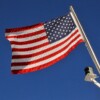I remember teaching a weekend course on American Christian history in the late 1990s. Since it was a weekend course for working adults, I used several videos in those late Saturday afternoon hours when eyes glazed and heads nodded. I found some great videos about the history of American Catholicism and African American Christianity, but the only video series I could find about the history of evangelicals was Randall Balmer’s series on the Religious Right, which he helped produce for PBS.
The problem was that the series only focused on the political involvement of evangelicals and failed to provide any depth to understanding evangelicals as a whole. One would not know, as I did from research on the project, that the churches’ response to the Rodney King riots in LA was largely spearheaded by evangelical churches (as defined by Bebbington). It made me realize that the American elites who might provide money for documentaries largely only care about evangelicals when what they do touches national or state-level politics. As a result, they contribute to the “nothing but” approach that only understands evangelicals through a political lens.
Yesterday, I discussed a new definition of evangelicalism that mirrors this trend. Matthew Sutton recently proposed this new definition: “post–World War II evangelicalism is best defined as a white, patriarchal, nationalist religious movement made up of Christians who seek power to transform American culture through conservative-leaning politics and free-market economics” (p. 19). In Part 1, I pointed out the inconsistent ways Sutton identifies evangelicals. In this second essay, I discuss the central problems with Sutton’s substantive definition.
The Usual Contemporary Academic Analysis
For most postmodern academics these days, the major critical lenses they use focus on political power, especially as related to race and gender (class, which was prevalent in the 1980s, has disappeared along with the Soviet Union). Indeed, at my university, I have colleagues whose predictable critical questions rely on these categories.
That does not mean analysis using these categories cannot be helpful and morally illuminating. I pointed out one helpful use yesterday. Yet, if these are the primary categories you use for analysis, or these categories are used instead of theological categories of analysis (versus in addition to), aspects of reality are lost. In other words, when you make everything about power as it relates to race, gender, and sexual identity, you do not illumine reality; you distort it. These are the consequences of “nothing but” scholarship. Today’s post will focus on three distortions in Sutton’s definition.
Power instead of Theology
First, Sutton’s definition is reductionistic in the usual academic tradition of Freud and Marx’s definitions of religion (“illusion” and “opiate of the masses” respectively). In his case, Sutton reduces everything to power and wants to ignore theological factors. Sutton claims the old evangelical historians, such as George Marsden, Mark Noll, Nathan Hatch, and Joel Carpenter, “underplayed how post–World War II evangelicalism is at its heart a political movement” (p. 3, italics added). Thus, he formulated his new definition because the revival of the term by post-World War II leaders “had little to do with [Bebbington’s] theological quadrilaterals [mentioned in yesterday’s post] and everything to do with organizing particular groups of Christians to secure more cultural and political power” (p. 17, italics added). It is a classic false dichotomy with “little to do” providing a close approximation to “nothing but.”
After all, even if we grant Sutton’s claims that the leaders of the National Association of Evangelicals should be the primary group by which to understand the causal motives of evangelical movement formation (a claim with which I do not agree), on what common basis did the founders of the National Association of Evangelicals (NAE) choose the particular groups of Christians they sought to organize? Clearly, they relied on the theological commonality. They were not knocking on the door of the Catholics, Eastern Orthodox, and Mainline Protestant congregations to form the NAE. All were also largely white and patriarchal (especially the Association of Evangelical Lutheran Churches, which had the same adjective in their name)
Are Catholics and Eastern Orthodox Evangelical?
Sutton’s reductive definition creates a further problem. It provides the scholar with nothing by which to distinguish between conservative Catholics or Eastern Orthodox from Protestant Evangelicals. After all, the Catholic and Eastern Orthodox Churches are also patriarchal and predominantly white. In this regard, Sutton appears to be poorly mimicking James Davison Hunter’s 1992 Culture Wars thesis that Americans have transitioned from multiple sectarian disagreements about theology to major disagreements about moral issues. The two sides Hunter identified in this new moral fight were the Progressive and Orthodox, with the latter group including conservative evangelicals, conservative Catholics, and Orthodox Jews. Sutton’s definition results simply in categorizing all the Christian Orthodox as Evangelical, even if they are Catholic, Eastern Orthodox, or Mainline Protestant, and reducing their concerns to political concerns.
What Drives Efforts to Change Culture and Politics?
That leads to my third problem. Hunter did a better job of recognizing that the emerging culture wars of the 1980s were not simply a raw Machiavellian quest for cultural or political power on either side. All sides (and not just the group Sutton identifies as evangelicals) had moral concerns that grew from their metaphysical or theological beliefs and the role the ever-expanding federal, as well as state-level governments, were playing in education, the family, non-profits, etc. All sides also wanted their moral vision, philosophically, theologically, and culturally formed, reflected in American political arrangements.
This reality leads to a couple of important sub-points. Sutton does an inadequate job of placing the political actions of the founders of the NEA into a larger historical context with other religious traditions. Before World War II, Mainline Protestants already held all the political levers of power in the United States. Even today, self-identified evangelicals have not caught up with the political activity of Mainline Protestants. They also have not caught up to their dominance in Congress or the Supreme Court. If there has ever been and still is a white, largely patriarchal, religious movement made up of Christians who both have power and seek more power to transform American culture through politics, it was and still is Mainline Protestantism. That being said, unlike Sutton, I will gladly acknowledge that theological and moral beliefs were still one among many drivers behind their quest. I want to avoid “little to do” or “nothing but” explanations.
Another important subpoint is that some evangelical organizations came about in the 1970s due to the growing presence of the government in all spheres of life and not evangelical political activism. Consider the Evangelical Council for Evangelical Accountability. It was organized due to the actions of Senator Mark Hatfield (hardly a conservative Religious Right champion) with the help of World Vision (not sure where they fit in Sullivan’s definition) and the Billy Graham Association. The reason for organizing was that Hatfield warned that the government might step in if non-profits did not keep themselves accountable. Congress and the Executive branch had discovered how the interstate commerce clause allowed for all sorts of federal control of civil society and state-level government entities (e.g., public schools).
In other words, other historical factors associated with the growth of power in all three branches of the federal government meant the government was now more involved in regulating the work of evangelical institutions. The power of the Executive Branch was ballooning (and continues to do so), the Supreme Court had incorporated the Bill of Rights, and the Congressional Branch was finding (and continues to find) creative ways to use the power of the purse to control institutions, including evangelical ones. There is an important difference between wanting simply to gain power and wanting to preserve the integrity of one’s churches, non-profit institutions, and families in the face of this intrusion. If born-again Jimmy Carter wanted to define the family one way and implement policy based on that definition, other born-again Christians wanted to be able to disagree and argue with that understanding.
Political Involvement for Group Preservation and Flourishing in a Liberal Democracy
During a profound and moving evening with one of my Pakistani graduate students and her husband, the leader of the Presbyterian Church in their country, our talk turned to life as a Christian minority in Pakistan. They showed us a recent video of a Christian who had been accused of blasphemy and burned to death. They shared about a pastor who had been killed after someone wrote verses of the Koran inside his church building.
They also discussed how they navigated difficult conversations about faith when every conversation could turn into an accusation of blasphemy. They also mourned about how one such accusation had resulted in a whole village of Christians being attacked and their homes burned until the military restored order.
Now, you could argue that this pastor, who spends a tremendous amount of time trying to engage in cultural and political persuasion with various Pakistani religious, cultural, and political elites, is primarily motivated by an attempt “to transform [Pakistan] through [non] conservative-leaning politics.” Of course, you would be wrong. That’s not his primary motivation, and it would be morally disingenuous to define it as such. That’s the problem with “nothing but” explanations and scholarship.
Now, Pakistan is not the U.S., and there are certainly high-level power-hungry evangelicals. In fact, two ran for president in 1976. But those two evangelicals also wanted to protect the theological and moral integrity of their positions and institutions, and their political involvement served those ends. I find it odd that Sutton does not acknowledge that combination but instead engages in “little to do” reductionism. Or perhaps his definition is less about helping us gain a sophisticated understanding of evangelicals and more about marginalizing those who adopt the term both politically and socially.





















